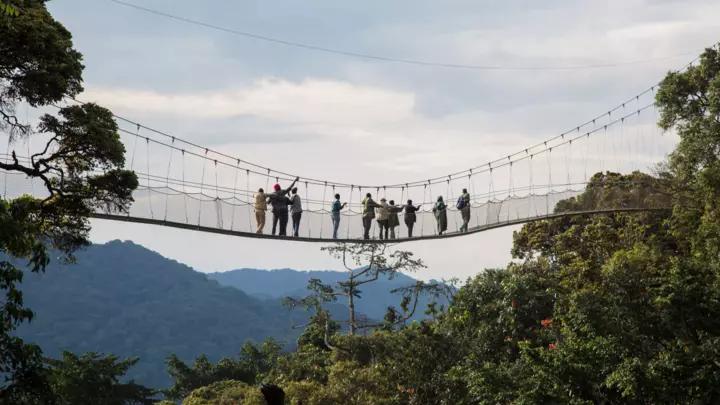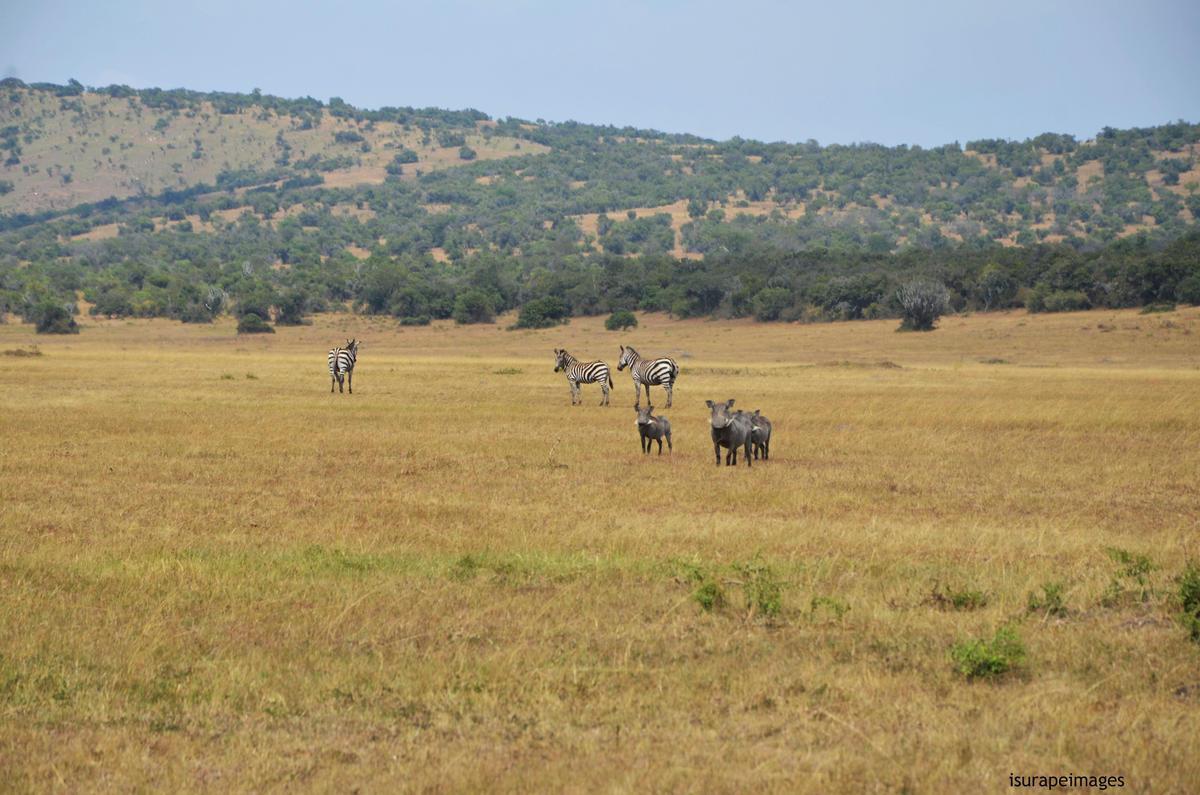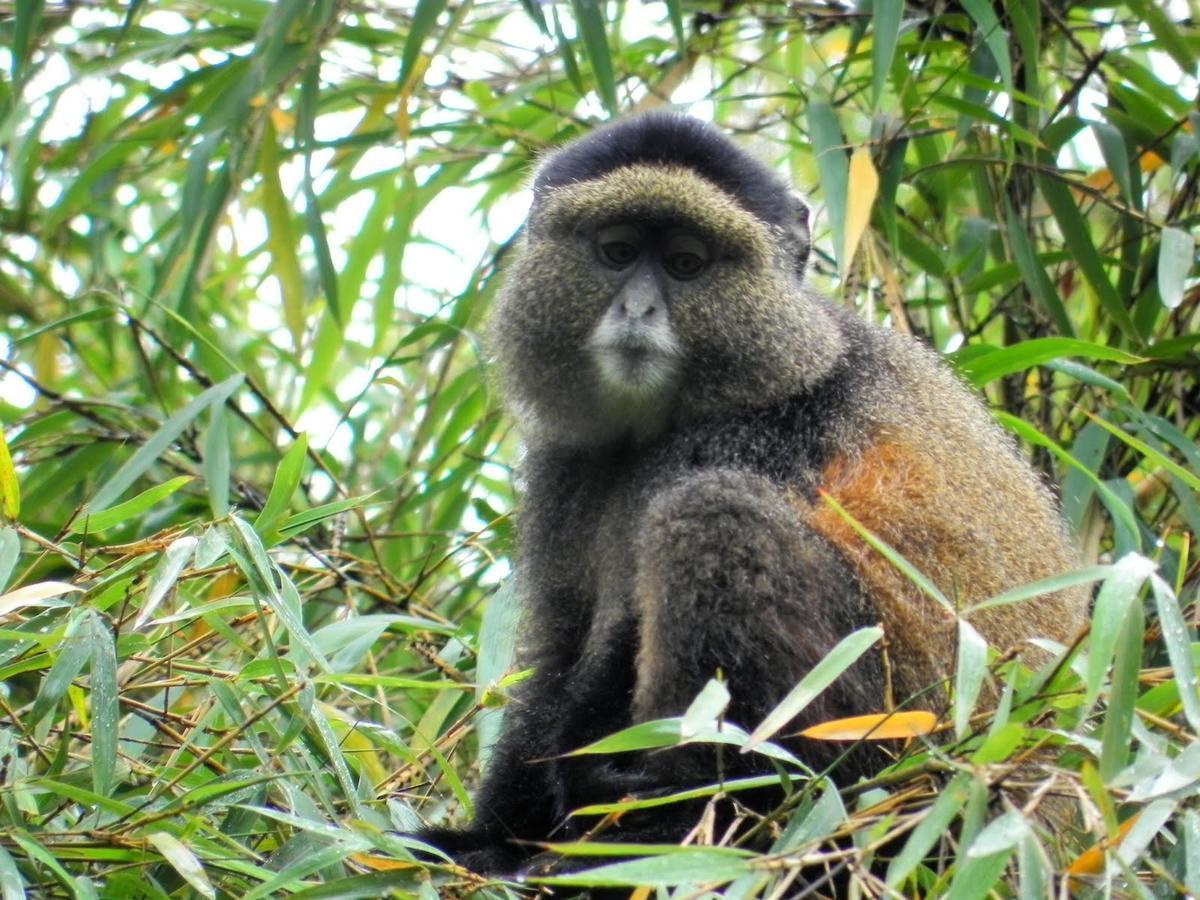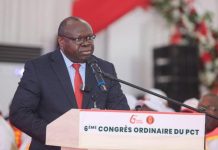Africa-Press – Rwanda. Attractive and beautiful is what comes to everyone’s mind when they first set foot in the land of a thousand hills. When it comes to places to visit in Rwanda nearly every tourist thinks of mountain gorillas however, there are other places everyone should put on their bucket-list while visiting Rwanda
Rwanda is a country filled with beautiful hills, wildlife, springs, culture sites and many others.
Here are some parks and museums to visit in Rwanda.
Akagera National Park
Akagera National Park is central Africa’s largest protected wetland and the last remaining refuge for savannah-adapted species in Rwanda. The park is located in the north east of Rwanda and is named after the Akagera river that flows around its eastern boundaries, it is known by its richness with various wild species including the big five such as lions, leopards, rhino, elephant, African buffalo and many others.
Different animals at Akagera National Park.
Volcanoes National Park
Without a doubt, the number one thing to do is gorilla trekking at Volcanoes National Park which is located in the north western part of Rwanda. It covers 160km of rain forest and encompasses five of the eight volcanoes in the Virunga Mountains namely Karisimbi, Bisoke, Muhabura, Gahinga and Sabyinyo. It is home to mountain gorillas and the golden monkeys, and was the base for the primatologist Diane Fossey. Experts estimate that there are about 600 gorillas in the park.
Nyungwe National Park
Nyungwe National Park, located in south western Rwanda, is one of the most important forest conservation areas in Africa. It contains a spectacular array of birds and 75 types of mammals. Most tourists come to this rainforest to track chimpanzees which have been habituated to humans by park rangers. The park is also home to the only canopy walk in East Africa.
Gishwati Mukura National Park
Rwanda’s fourth national park, Gishwati Mukura is made up of two separate forests, the larger Gishwati and small Mukura, forming a total of 34 square kilometres plus a buffer zone.
The forests sit on the ridge which divides the Congo and Nile water catchment areas, along the incredibly biodiverse Albertine Rift in the west of the country. It is made up of 60 species of trees, including indigenous hardwoods and bamboo.
A golden monkey at Gishwati-Mukura forest national Park. Due to its biodiversity haven.
Gishwati is home to a group of 20 chimpanzees which live alongside golden monkeys, L’Hoest’s and Blue Monkeys.
Museums
Kigali Genocide memorial
The museum reflects into the timeline that led to the 1994 Genocide against Tutsi; there are halls of photography, art facts and information. The museum continues with another permanent exhibit on the history of Genocide around the world and intervention efforts from international communities helping to put the 1994 Genocide against Tutsi into context. Visiting the Kigali memorial site is an important part of understanding the country’s history. Give yourself time to contemplate the experience and have a moment of silence for the victims resting at this site which is located in Gisozi Kigali.
Campaign against Genocide Museum
The Campaign against Genocide Museum is located in Kigali’s Parliamentary building. The 600 Rwanda Patriotic Army (RPA) soldiers were housed at this place when they traveled to the capital in December 1993, to help implement the new transitional unity government agreed upon under the Arusha Accords.
However, the genocide broke out before the government could be instated, leaving the soldiers as the Tutsis’ only defense after first-world nations largely failed to come to their aid. Its exhibitions and statues commemorate the soldiers’ bravery, and the lives they managed to save by eventually bringing the genocide to an end in July 1994. The RPA was led by Paul Kagame, now president of Rwanda, who opened the museum in his comrades’ honor in 2017.
Kandt House Museum
Richard Kandt was the first colonial governor of Rwanda, on behalf of Germany, until the early 1900s. At present, the Kandt House Museum in Kigali comprises three main parts. The first part presents Rwandan life in all its aspects, social, economic, and political before the colonial period.
The second part traces the experience of the Rwandan people during the colonial period. Following the Berlin Conference in 1884, the Germans ruled Rwanda until 1916, when the Belgians took over under the League of Nations Mandate after World War I. Richard Kandt’s life and deeds in Rwanda are covered here.
The third part covers the history of Kigali, before, during and after the colonial era. Kigali was made the capital upon independence in 1962.
Rwanda Art Museum
Established in 2018 and located east of Kigali International Airport, the Rwanda Art Museum is located within the former Presidential Palace. It is primarily a contemporary art museum, with pieces ranging from paintings and sculptures to ceramics and mixed media. In addition to the permanent collection, which features artworks from both Rwandan and international artists, the museum hosts regular temporary exhibitions. It also has an Art Kids’ Studio, where children can enjoy a hands-on creative experience. In the garden of the former palace, the remains of an airplane can be seen. This is all that is left of the presidential jet that was shot down above Kigali on April 6, 1994, killing then-president Juvénal Habyarimana.
King’s Palace Museum
The King’s Palace, located in Nyanza, Huye district, was the traditional seat of Rwanda’s kingdom. In olden times, Nyanza was the heart of Rwanda. According to oral tradition, it was the site of battles and power struggles.
For a long time, the monarchy was mobile, moving the court between various locations. When it eventually settled in one place, Nyanza was the obvious choice. The capital of the kingdom had as many as 2,000 inhabitants, and huts built with the same methods as seen here.
Ethnographic Museum
Ethnographic Museum of Rwanda was a gift from Belgium’s King Badouin in the late 1980s, the Ethnographic Museum now houses one of Africa’s finest ethnographic collections. Seven galleries display historical, ethnographic, artistic and archaeological artefacts accompanied by visual aides, giving visitors a rich insight into Rwandan culture.
The exhibits open with geographical and geological displays, moving on to items used in hunting, agriculture, animal husbandry, pottery, weaving and woodwork. Traditional clothing and architectural methods are also illustrated, as well as the social importance of cattle. Descendants of the royal herd can be seen to this day at the King’s Palace in nearby Nyanza
For More News And Analysis About Rwanda Follow Africa-Press








